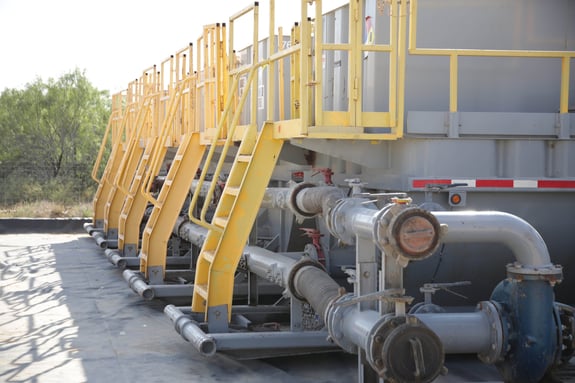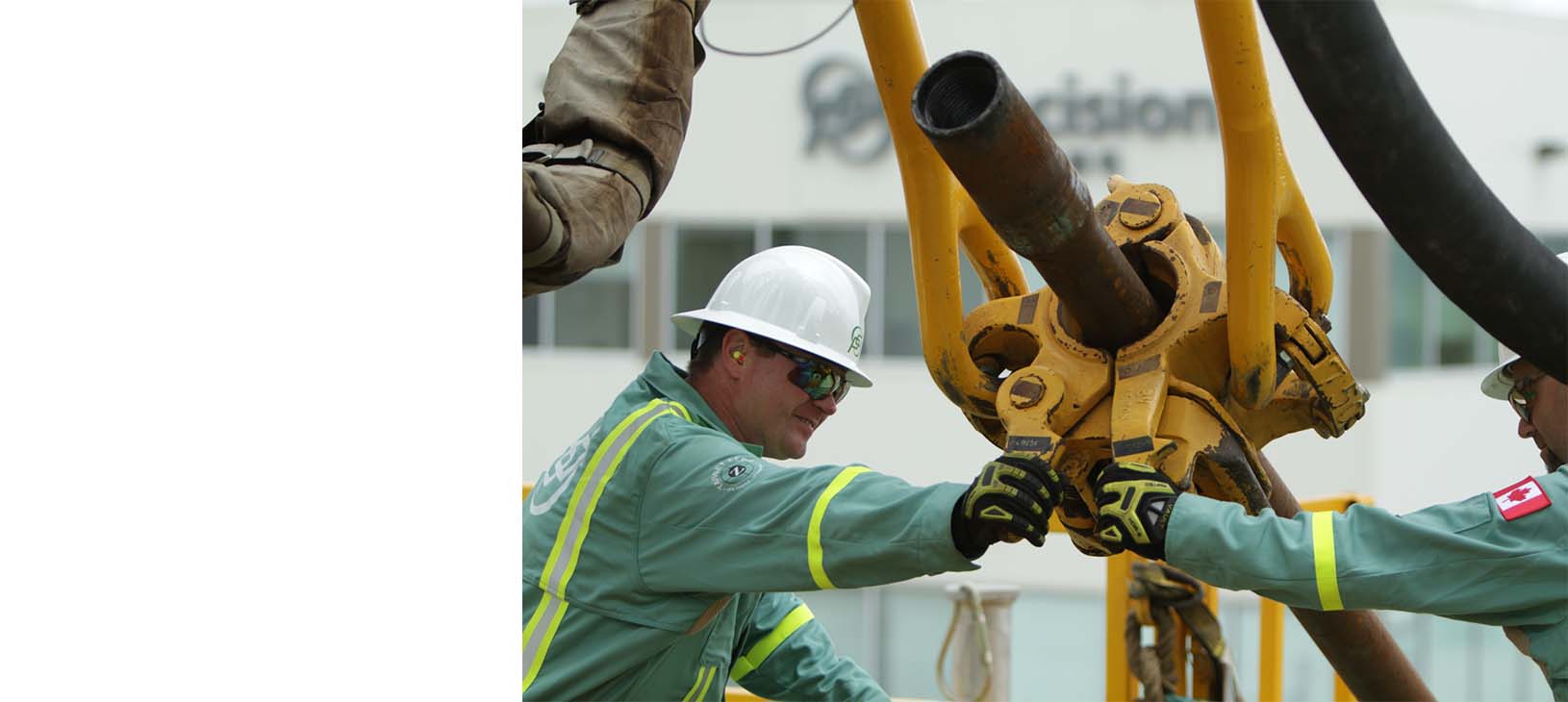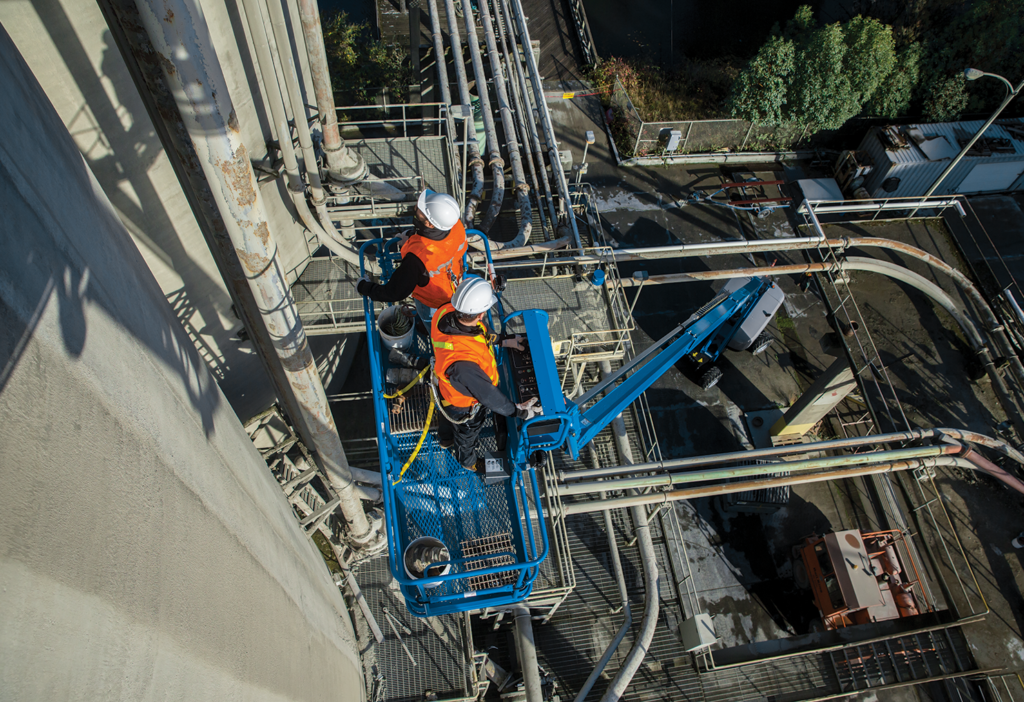Superior Oilfield pipeline equipment rentals: case studies
Wiki Article
A Comprehensive Overview to the Different Sorts Of Oil Field Equipment and Pipeline Equipment Available
The oil and gas sector counts greatly on specialized equipment for efficient extraction and transportation. Different types of equipment, from drilling rigs to tank, play vital roles in this complicated process. Each tool offers distinct functions that add to general functional success. Understanding these components is vital for any individual associated with the field. As the industry develops, so also do the innovations that sustain it. What innovations are on the perspective?
Drilling Rigs: The Backbone of Oil Expedition
Drilling rigs offer as the vital machinery in the domain name of oil exploration, enabling business to accessibility hydrocarbon gets buried deep underneath the Earth's surface. These rigs can be found in various kinds, consisting of land rigs, offshore rigs, and mobile devices, each developed to operate in specific atmospheres. Equipped with advanced innovation, piercing rigs can pass through geological developments with accuracy, guaranteeing efficient resource extraction. The architectural stability and functional capabilities of these rigs are crucial, as they should hold up against extreme problems and substantial stress. Moreover, the selection of an exploration rig influences the overall project expense and timeline, making it an important factor to consider for oil business seeking to optimize their expedition efforts and make the most of productivity in their procedures.Pumps: Crucial for Fluid Movement
In the oil extraction process, the role of pumps is significant, assisting in the movement of liquids throughout different phases of production. Pumps are necessary for carrying unrefined oil, water, and various other liquids from below ground reservoirs to the surface area and after that with pipelines to refineries. They are available in numerous types, consisting of centrifugal, favorable displacement, and submersible pumps, each offering particular objectives based on the liquid features and functional demands. Centrifugal pumps are generally used for their effectiveness in high-flow applications, while positive displacement pumps master dealing with thick fluids. The option of pump influences total performance, operational safety and security, and maintenance costs. Correct selection and upkeep of pumps are vital for enhancing production and reducing downtime in oil field operations.Shutoffs: Controlling Flow and Pressure

Shutoffs play a crucial function in managing the circulation and stress of liquids within oil areas and pipelines. Different kinds of valves offer distinct applications, each developed to meet particular features fundamental for efficient operation - Superior Oilfield Rentals oilfield. Recognizing the characteristics and usages of these valves is crucial for maximizing system efficiency and security
Sorts of Valves
Necessary parts in oil field procedures, shutoffs play a crucial role in controlling the flow and stress of liquids within pipes and tools. Different sorts of shutoffs are utilized to satisfy the varied needs of oil and gas manufacturing. Common kinds include gate valves, which offer a straight-line circulation and minimal stress drop; world valves, understood for their strangling capabilities; and ball shutoffs, acknowledged for their quick on/off control. In addition, check shutoffs protect against backflow, while butterfly valves use a light-weight solution for managing circulation. Each valve kind is developed with particular products and setups to hold up against the rough conditions often discovered in oil areas, making certain integrity and performance in procedures. Comprehending these types is critical for effective system administration.Valve Applications and Functions
While different types of valves serve unique functions, their main applications revolve around managing flow and pressure within oil and gas systems. Valves such as gateway, world, and round valves regulate fluid motion, ensuring peak performance and safety and security. Entrance valves are commonly made use of for on/off control, providing very little circulation resistance. Globe shutoffs, on the other hand, offer exact circulation guideline, making them ideal for throttling applications. Round valves are favored for their fast procedure and limited sealing abilities. Additionally, stress relief shutoffs are important for preventing system overpressure, guarding equipment integrity. Generally, the appropriate selection and application of shutoffs enhance functional performance, guaranteeing the dependable transport of oil and gas with pipelines and processing centers.Compressors: Enhancing Gas Transportation
Compressors play an essential role in the effective transport of natural gas, making certain that it moves efficiently with pipes over lengthy distances. These devices increase the stress of gas, permitting it to get rid of friction and altitude modifications within the pipeline system. In addition, compressors facilitate the harmonizing of supply and demand, accommodating fluctuations in usage and production rates. Numerous kinds of compressors are employed in the market, consisting of centrifugal, reciprocating, and rotary screw compressors, each offering distinctive benefits based on the operational requirements. Routine upkeep of these compressors is essential to make the most of performance and decrease downtime, inevitably adding to a trusted gas transportation network. Their crucial feature underscores the value of compressors in the general oil and gas infrastructure.Storage Tanks: Safe and Effective Fluid Management
Effective transportation of gas relies upon different support group, among which is the proper administration of storage containers. These containers play an essential role in securely having fluids, ensuring that operational effectiveness is kept while decreasing environmental risks. Built from sturdy products, they are created to stand up to high pressures and destructive elements. Correctly sized and tactically situated, storage containers assist in the smooth circulation of natural gas and various other fluids, preventing bottlenecks in supply chains. Regular upkeep and surveillance are crucial to detect leakages or architectural concerns, advertising security and conformity with regulatory criteria. Eventually, the reliable management of storage tanks is important for the overall stability and integrity of the oil and gas sector's liquid handling systems.
Pipeline Systems: Facilities for Transport
Pipeline systems function as the backbone of the oil and gas industry, helping with the effective transportation of hydrocarbons over large distances. These systems include different components, including pipes, valves, pumps, and compressors, all thoroughly made to assure smooth circulation. The materials made use of in pipeline construction, commonly steel or high-density polyethylene, are chosen for longevity and resistance to rust. Pipeline networks can cover across land and water, linking manufacturing websites to refineries and warehouse. Additionally, advanced modern technology makes it possible for real-time monitoring of flow rates and stress degrees, boosting operational performance. The calculated placement of these pipes minimizes ecological effect while taking full advantage of source availability, therefore playing an important role in meeting energy demands around the world.Safety And Security Equipment: Making Certain Employee and Environmental Protection
The procedure of pipeline systems, while necessary for power transport, likewise offers significant security obstacles for workers and the atmosphere. Security equipment plays a considerable function in reducing these risks. Personal protective equipment (PPE) such as safety helmets, gloves, and non-slip footwear safeguards workers from physical dangers. In addition, gas discovery systems check for leaks, making certain that dangerous substances do not posture a hazard to employees or the bordering ecological community. Emergency situation closure systems are necessary for rapidly halting operations during a situation, protecting against possible calamities. Spill control materials, including absorbents and barriers, are essential for minimizing ecological influence. Generally, purchasing comprehensive safety and security tools is vital for maintaining operational stability and protecting both employees and the environment in the oil and gas market.
Regularly Asked Concerns
Just how Do I Choose the Right Oil Field Equipment for My Job?
Selecting the best oil area tools includes reviewing project requirements, budget constraints, and operational needs. Think about aspects such as equipment dependability, compatibility with existing systems, and the distributor's reputation to ensure peak performance and safety.What Are the Upkeep Demands for Oil Field Equipment?
Maintenance requirements for oil area equipment include normal inspections, lubrication, and prompt fixings. Operators check here should likewise adhere to manufacturer guidelines, screen efficiency metrics, and warranty compliance with security regulations to improve durability and efficiency.
How Can I Make Sure Conformity With Environmental Rules?
To ensure compliance with environmental laws, business must conduct routine audits, apply best practices, buy training, keep appropriate paperwork, and stay upgraded on regulations (Superior Rentals fusion machines). Collaboration with environmental companies can additionally boost adherence to policiesWhat Is the Typical Life Expectancy of Pipeline Equipment?
The ordinary lifespan of pipeline tools typically ranges from 20 to half a century, depending on variables such as worldly high quality, environmental problems, and upkeep techniques. Routine inspections can significantly influence durability and operational performance.How Do I Safely Transport Oil Field Equipment to Remote Locations?
Delivering oil area equipment to remote areas requires mindful preparation, including route analysis, securing permits, making use of suitable cars, and ensuring security protocols are adhered to. Appropriate training and interaction among teams are vital for successful transport.Report this wiki page